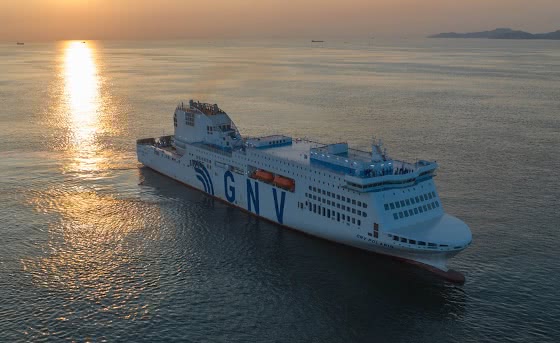
Today GNV, the ferry company of the MSC group, has taken over
GNV Polaris delivers, the first of four new units
ro-pax built in China that will join the fleet
by 2026. The ship will soon leave the Asian shipyard
to reach Italy, where further
fittings before entering service by next January.
The shipping company highlighted that, thanks to its
Technical characteristics, the new ship will strengthen the network
of GNV services ensuring greater flexibility
operational and more efficient peak management
seasonal, with particular attention to routes to Sicily and
Sardinia.
Among the features of the new ship built in the shipyard
Guangzhou Shipyard International (GSI) Naval Administrator
delegate of GNV, Matteo Catani, recalled that, "thanks to the
high standards in terms of energy efficiency and
possibility of taking advantage of cold ironing, this ship
represents a fundamental step for our company also in
in terms of reducing the environmental impact of our operations
and will act as an accelerator of the sustainability path
that we have started and in which we firmly believe".
GNV Polaris has a gross tonnage of about 46,000
tons, a length of 218 meters, a width of 29.60 meters
and can reach a maximum speed of 25 knots. The
The ship has 239 cabins and a cargo capacity of
1,500 passengers and 3,100 linear meters of rolling stock. Like the others
three newly built units, in addition to being equipped with the
systems necessary for cold ironing, i.e. the connection via
a socket to the electricity grid on the quay that allows an important
reduction of emissions as well as an improvement in the
air quality and local noise, GNV Polaris
is equipped with exhaust gas cleaning systems (EGCS) and
Selective Catalytic Reduction (SCR) to meet IMO requirements
Tier III. There are also additional energy-saving
features" such as: heat recycling technologies by means of
turbo-alternator; use of inverters for the optimization of the
electrical load of pumps and fans; Using LED lights
on the entire lighting system; Optimization of the shapes of
hull, bulb, propellers and rudders, and paint application
in the hull in order to minimize the consumption of
fuel necessary for propulsion.
